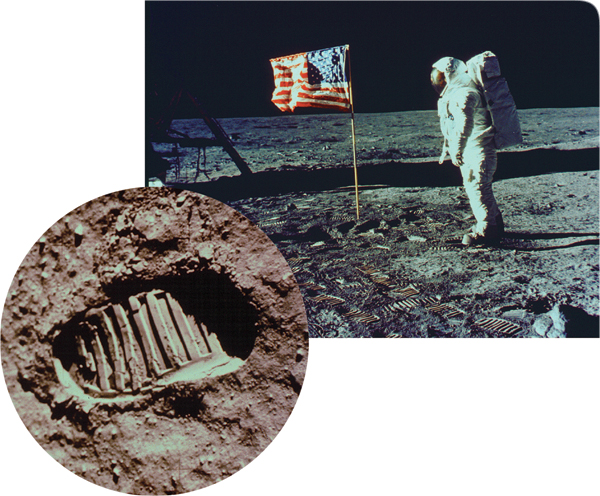Show your support by donating any amount. (Note: We are still technically a for-profit company, so your
contribution is not tax-deductible.)
PayPal Acct:  Feedback:
Feedback: 
Donate to VoyForums (PayPal):
| [ Login ] [ Contact Forum Admin ] [ Main index ] [ Post a new message ] [ Search | Check update time | Archives: 1, 2, 3, 4, 5, 6, 7, 8, 9, [10] ] |
If the Moon were billions of years old, it should have accumulated a thick layer of dust and debris from meteoritic bombardment. Before instruments were placed on the Moon, some scientists were very concerned that astronauts would sink into a sea of dust—possibly a mile in thickness (a). This did not happen. Very little meteoritic debris is on the Moon. In fact, after examining rocks and dust brought back from the Moon, scientists learned that only about 1/67th of the dust and debris came from outer space. Recent measurements of the influx rate of meteoritic material on the Moon also do not support an old Moon. [For details see: pages 479-481]

Figure 31: Moon Dust and Debris. Concern that astronauts and equipment would sink into a sea of dust was so great that two missions (Ranger and Surveyor) were sent to the Moon for a closer look. The anticipated problem, which turned out not to exist, arose from the belief that the Moon is billions of years old.
a. Before instruments were sent to the Moon, Isaac Asimov made some interesting, but false, predictions. After estimating the great depths of dust that should be on the Moon, Asimov dramatically ended his article by stating:
“I get a picture, therefore, of the first spaceship, picking out a nice level place for landing purposes, coming in slowly downward tail-first and sinking majestically out of sight.” Isaac Asimov, “14 Million Tons of Dust Per Year,” Science Digest, January 1959, p. 36.
Lyttleton felt that the dust from only the erosion of exposed Moon rocks by ultraviolet light and x-rays “could during the age of the moon be sufficient to form a layer over it several miles deep.” Raymond A. Lyttleton, The Modern Universe (New York: Harper & Brothers, 1956), p. 72.
Thomas Gold proposed that thick layers of dust accumulated in the lunar maria. [See Thomas Gold, “The Lunar Surface,” Monthly Notices of the Royal Astronomical Society of London, Vol. 115, 1955, pp. 585–604.]
Fears about the dust thickness were reduced when instruments were sent to the Moon from 1964 to 1968. However, some concern still remained, at least in Neil Armstrong’s mind, as he stepped on the Moon. [See transcript of conversations from the Moon, Chicago Tribune, 21 July 1969, Section 1, p. 1, and Paul D. Ackerman, It’s a Young World After All (Grand Rapids: Baker Book House, 1986), p. 19.]
Most Scientific Dating Techniques Indicate That the Earth, Solar System, and Universe Are Young.
For the last 150 years, the age of the Earth, as assumed by evolutionists, has been doubling at roughly a rate of once every 15 years. In fact, since 1900 this age has multiplied by a factor of 100!
Actually, most dating techniques indicate that the Earth and solar system are young—possibly less than 10,000 years old.
[ From “In the Beginning” by Walt Brown]
[
Next Thread |
Previous Thread |
Next Message |
Previous Message
]
|
Forum timezone: GMT-8 VF Version: 3.00b, ConfDB: Before posting please read our privacy policy. VoyForums(tm) is a Free Service from Voyager Info-Systems. Copyright © 1998-2019 Voyager Info-Systems. All Rights Reserved. |